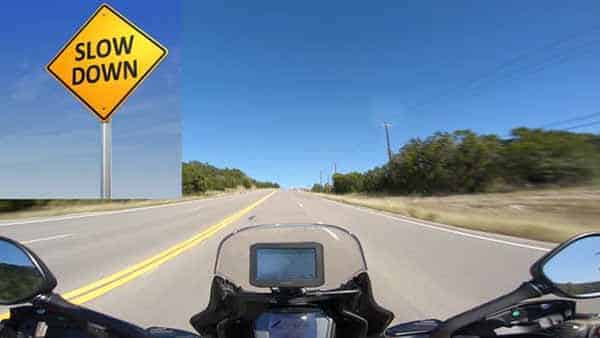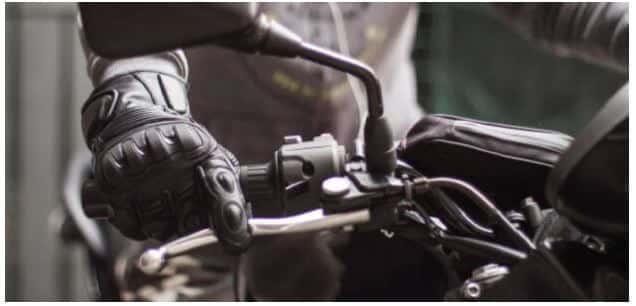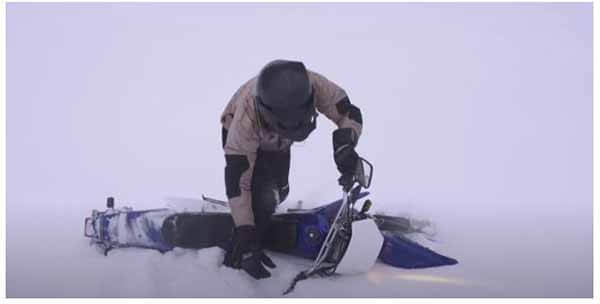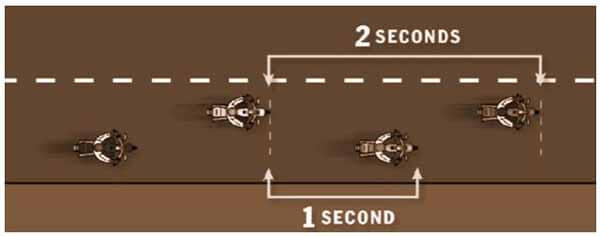It is illegal to ride a motorcycle without a license, but here are five more bad habits–the leading causes of motorcycle accidents–that we think are worth mentioning, just so you know, and avoid them.
In actual fact, about 75% (two out of three) of all motorcycle crashes are caused by rider error. This little-known statistic is advantageous because riders have more control over accident prevention if we train our bodies and mind to do the right things the right way when out riding.
5 Mistakes to Avoid When Riding a Motorcycle
-
Don’t Panic Brake
Riding courses teach you to cover your brake levers with some of your fingers ready in case you need to stop suddenly. We say, don’t simply cover levers, preload them! While motorcycle brakes and in effect the tires can handle immense braking force, they are not good at exceptionally high rates of force. Sudden braking causes tires to lose traction/grip and lock, causing a slip and fall.
This is because grip (friction) relies on the adhesion of rubber to the road, which, in turn, depends on the weight (normal force) acting on the tire at the contact point. Heavier normal force, more adhesion, more grip.
The kicker is that your suspension is damped, and it takes a while for this spring to compress, allowing the weight transfer. So, when you brake fast, you’re asking for adhesion that your tire doesn’t yet have the normal force to achieve. In other words, you are asking your bike to crash.
Jerky reactions to brake come as reflexes, and your hand will be moving too fast by the time it hits the engagement point. When you preload to the near engagement point, the initial breaking is physically bound to be progressive. Even a hand jerk reaction has to build up to its force so that the rate of force is not as much and traction is maintained.
Related: What to Check on a Motorcycle Before Riding?
-
Don’t Scan Only Once at Intersection
Pseudo neglect is the phenomenon where right-to-left readers acquire targets faster in their left field of view and are more likely to miss observations on the right and vice versa.
Right-to-left and left-to-right only readers often fall victim to pseudo neglect, which does not seem to be a common problem for bilingual bidirectional readers. They rarely miss anything in either field of view and are the bunch you want to emulate for improved safety on the road.
To avoid pseudo neglect, you can make a habit of sweeping left-right-center and then again right-center-left. By doing so, you give yourself twice as long exposure to detect threats in both fields of view.
Bidirectional readers are typically 200 milliseconds faster than the left to the right readers or the right to left only compatriots. Assuming highway speeds of 33 meters per second, it makes a difference of up to 6 meters in stopping distance, which can definitely save your life.
-
Avoid Crouching When Riding in Cold Weather
Crouching reduces drag resistance and allows the motorcycle to reach higher speeds than when it’s not crouching. We know that riders will experience cooler temperatures than the actual ambient temperatures even under fair weather, which makes this proposition seem counter-intuitive.
However, crouching harms your riding ability in cold because the effects of gusts and rain cause your body to send jerked inputs to the handlebars, causing loss of control.
The trick when it gets cold and gustily on a ride is to get even colder. The wind has little effect on modern aerodynamic motorcycles, and tires are able to maintain traction under snow, wet asphalt, or even light mud. It is the jerky reactions of the rider’s cold body that causes the handlebars to lock and forces the rider to dump the bike.
Crouching may have been useful thousands of years back when huddling around a cave fire to protect that precious body heat and avoid hypothermia, but it’s not your friend when cold weather riding.
So, when riding through cold and rain, sit up loose and open your chest to maintain your normal riding stance even if it makes you colder. Don’t forget to take frequent breaks and stops for hot coffee or tea!
Related: How Do You Waterproof Leather Motorcycle Riding Boots?
-
Don’t Plant Right Foot First When Stopping
It is said that if you want to spot a beginner, watch them stop. The correct way to stop a bike is to balance so that you lean the bike and stop, planting the left foot first on the surface when completely stopped. This ensures that you stop dragging the rear wheel for balance and keep the tail light showing other drivers that you have stopped or are still on brakes.
Stopping with no brakes leaves you exposed to shunting forward into other traffic or being hit from behind. Jerking the front brake lever causes your handlebars to lock and brings you down with the bike suddenly, which makes the rear brake the safer option even for emergency stops. Stops with rear brakes are just easier, safer, and smoother.
-
Avoid the Accordion Effect
We saved the worst for last. In traffic and with regard to motorcycles, the accordion effect is the typical accelerations and decelerations a rider makes in response to the acceleration and deceleration of the vehicle in front. Put simply, this is the habit of riders to accelerate hard to catch up with a buddy in a group ride.
Group riding can be incredibly dangerous because of the accordion effect. The rider behind, often the slower rider, has physics working against them because they will pull away later than the one who triggered the race.
They will have to make faster acceleration just to catch up. If the rider in front spots trouble, they start to stop, again it takes time for the one pursuing them to realize this notwithstanding their higher speed.
This essentially means the rider behind needs a longer stopping distance despite being obstructed from the road ahead and risks bumping into their friend in front who by then is hard on brakes. This event is often fatal and should be avoided at all costs.
Put more experienced riders (called sweepers) behind in a group ride to beat the accordion effect. They have faster reaction times and don’t feel the need to catch up or show off speed.
In Summary
When riding a motorcycle, avoid panicking braking, pseudo neglect, crouching in cold weather, stopping with the right foot, and the accordion effect for improved riding safety. These are mistakes that get novice and intermediate riders in big trouble. It’s not all of them, but start here; you will be safer and more confident with your two-wheeler.
About the author: Michael Parrotte was the Vice President of AGV Helmets America, and a consultant for KBC Helmets, Vemar Helmets, Suomy Helmets, Marushin Helmets, KYT Helmets, Sparx Helmets. In addition, he is the founder and owner of AGV Sports Group.
MS/A




